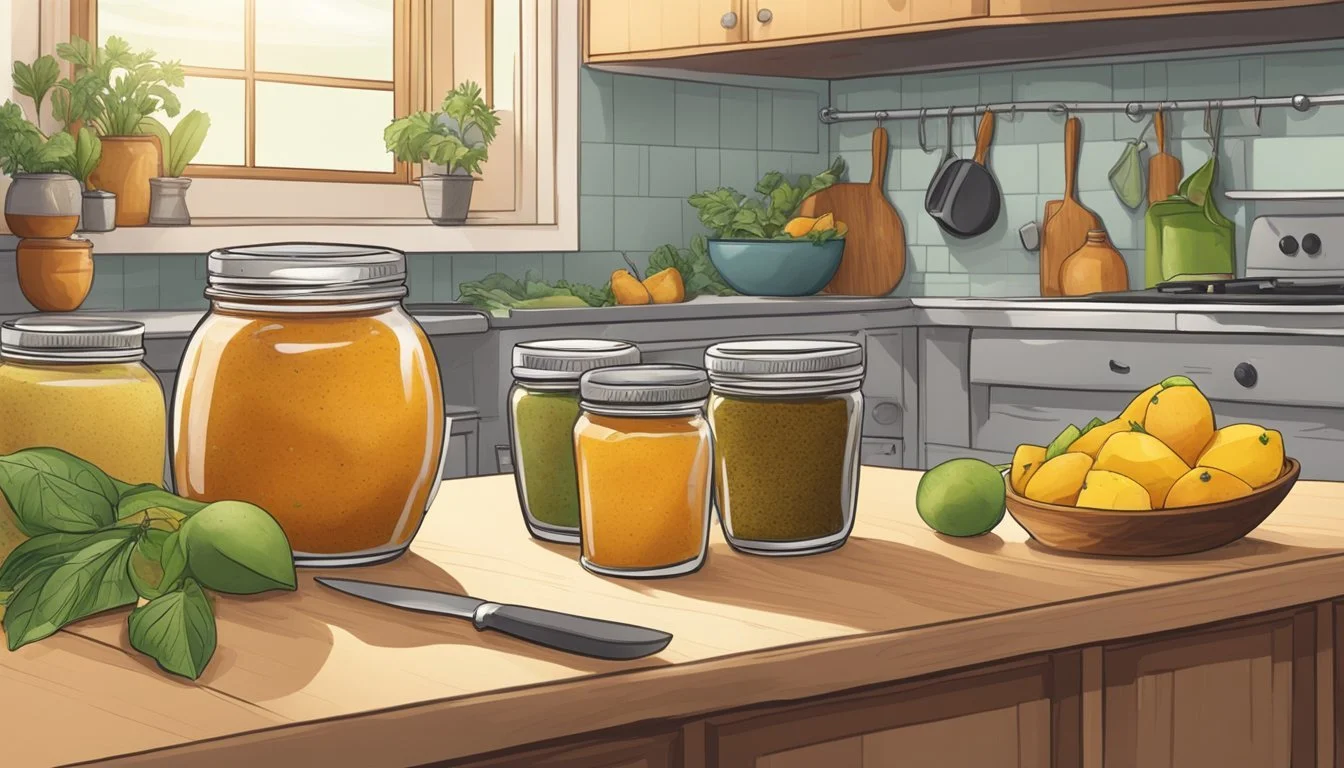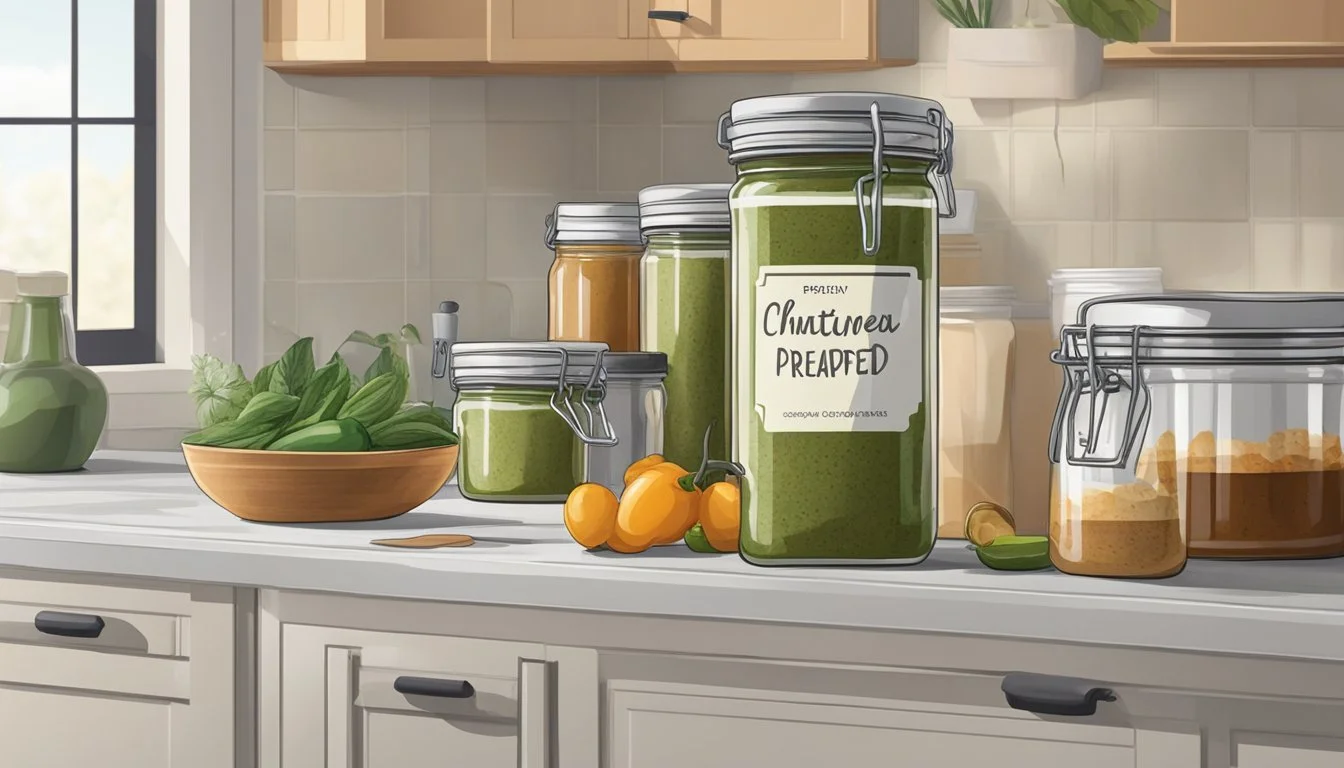How Long Do Freshly Prepared Chutneys Last?
Shelf Life and Storage Tips
Freshly prepared chutneys are a vibrant addition to many meals, offering a complex combination of sweet, sour, and spicy flavors that enhance the overall dining experience. Chutneys, in their various forms, are a treasured condiment originating from South Asian cuisine and have become popular globally. The shelf life of these preserve-like mixtures can vary considerably based on ingredients, preparation, and storage conditions.
Homemade chutney often lacks the preservatives found in commercially produced varieties, which can affect its longevity. When stored correctly in a cool, dark place, unopened chutney can last up to a year, and sometimes even reach a two-year mark for some varieties. Once opened, the freshness of chutney largely depends on maintaining an airtight environment and refrigeration to slow down the spoilage process.
Shelf life isn't just about a set timeframe; it is deeply influenced by the storage conditions post-preparation. For optimal freshness and to prevent the growth of mold and bacteria, chutney should be kept between 40°F (4°C) and 50°F (10°C). Exposure to light and fluctuating temperatures can degrade the quality of chutney, while proper sealing techniques can significantly extend its shelf life, making every effort to preserve its vibrant taste and aroma worthwhile.
Basics of Chutney
Chutney is a versatile condiment that has adapted to various culinary traditions around the world. Originating from India, it's a flavorful combination of fruits, herbs, vinegar, sugar, and spices.
Definition and Origins
Chutney is a sauce or relish with origins in Indian cuisine, where it is known as "chatni". The term itself means 'to lick', indicating something that is tasty enough to compel one to lick their fingers. Traditionally, it involves grinding fresh ingredients such as fruits, herbs, and spices to create a variety of flavors ranging from sweet to savory and mild to hot.
Key Characteristics
The key characteristics of chutney include its texture and flavor. Typically, chutneys possess a texture that can be chunky or smooth, with a consistency similar to jams or relishes. Flavor profiles vary widely, combining the tartness of vinegar, the sweetness of sugar, and a distinct kick from a mix of spices. Preservation through vinegar and sugar also allows chutneys to last for extended periods when stored properly.
Popular Varieties
Chutneys come in numerous varieties, reflecting the diversity of Indian culinary practices and the adaptability of the condiment to different tastes:
Mango Chutney: Often made with green mangoes, sugar, and spices.
Tomato Chutney: Uses ripe tomatoes, sometimes paired with tamarind for a tangy flavor.
Peach Chutney: Combines the sweetness of peaches with the acidity of vinegar.
Coriander Chutney: A fresh, green blend of coriander leaves, mint, and spices.
Mint Chutney: Made with mint leaves, giving it a refreshing cool taste.
Tamarind Chutney: Utilizes tamarind paste as a base for a sweet and sour profile.
Each type of chutney showcases a unique set of ingredients and preparation techniques, making them a versatile companion to a variety of dishes.
Preparation Techniques
The longevity of freshly prepared chutney is greatly influenced by the initial preparation techniques. From ingredient selection to proper canning, the methods used determine both taste and shelf life.
Chutney Ingredients and Substitutions
Ingredients form the foundation of homemade chutney, with options ranging from sweet fruits to spicy peppers. The balance of vinegar and sugar adds not just flavor but also acts as an antimicrobial agent, crucial for preservation. For a healthier variant, sugar substitutes like honey can be used, but they may alter the acidity level and, subsequently, the chutney's shelf life.
Cooking Process and Time
The cooking process involves a combination of slow cooking and the meticulous blending of ingredients. Homemade chutney usually requires a slow cooking method, allowing flavors to meld and ingredients to reach a thick, syrupy consistency. The process often ranges from 30 minutes to several hours, depending on the desired thickness and the water content of the ingredients.
Sterilization and Canning
Sterilizing jars is essential for longevity and safety. Jars should be submerged in boiling water for 10 to 15 minutes to kill any bacteria. After filling with chutney, a canning pot is used for the final seal. The jars are placed in boiling water again, ensuring that the high temperature effectively sterilises the contents and eliminates any remaining bacteria. This process also creates a vacuum seal, protecting the chutney from air and potential contaminants.
Storing Chutney
Proper storage of chutney is crucial for maintaining its flavor, texture, and safety. The shelf life can be significantly extended through correct immediate storage after preparation, long-term preservation methods, and choosing between refrigeration and room temperature based on storage duration and conditions.
Immediate Storage after Preparation
Once chutney is prepared, it should promptly be transferred to glass jars. These jars must be clean, sterilized, and dry to prevent contamination. The chutney should be poured into the jars while it is still hot, which can help create a vacuum seal as it cools, enhancing the preservation process.
Long-Term Preservation
For extending the shelf life beyond a few weeks, one can employ the canning method. Fill the glass jars with hot chutney leaving some headspace, then place them in a boiling water canner. Process for the correct amount of time before switching off the heat and let them sit for another 5 minutes. Remove and let them cool undisturbed for 12 to 24 hours. Check for a proper seal before storing in a cool dark place such as a pantry. Properly canned chutney can last for up to one to two years.
Refrigeration vs. Room Temperature
Storage conditions significantly affect a chutney's shelf life. An airtight container in the refrigerator keeps chutney fresh for a month up to three months. On the contrary, at room temperature, an unopened jar of chutney can remain edible for at least a year if kept in a cool dark place away from light and heat, which could otherwise accelerate spoilage. Once opened, it is vital to always store the chutney in the refrigerator to preserve its quality.
Quality and Freshness
The longevity of freshly prepared chutneys is influenced by their ingredients and storage. Ensuring the best quality chutney involves understanding its shelf life, identifying spoilage, and recognizing how different ingredients affect freshness.
Determining Shelf Life
The shelf life of chutney is greatly influenced by the balance of acidity, sugar, and preservatives present. Sugar and vinegar act as natural preservatives, extending the shelf life by creating an inhospitable environment for bacteria. Most homemade chutneys can retain optimal flavor and consistency for up to 2 to 3 months when refrigerated.
Optimal Storage Conditions: Store chutney in the refrigerator at 40°F (4°C) to 50°F (10°C).
Unopened vs. Opened: A sealed, unopened jar of chutney can last at least a year, while an opened jar should be consumed within a month for best quality.
Signs of Spoilage
Chutneys that have surpassed their shelf life may exhibit signs of spoilage. These include:
Off Odor: A telltale sign of spoilage where the aroma deviates from the tangy scent of vinegar and spices.
Mold Growth: Visible mold indicates the chutney has been compromised and should be discarded immediately.
Texture Changes: Any unexpected change in texture, such as excessive thickening or thinning.
Color Shifts: A significant change in color can also be a sign the chutney is no longer fresh.
Impact of Ingredients on Longevity
Ingredients play a crucial role in the freshness and shelf life of chutney. While preservatives can extend longevity, chutneys made with fresh, high-quality ingredients without artificial preservatives might have a shorter shelf life but often offer richer, more vibrant flavors and colors. It is also important to note the expiration date on commercially prepared chutneys, as it suggests when the product might begin to lose its best quality.
Serving and Usage
Freshly prepared chutneys serve not only as a flavorful condiment but also as a versatile element in various culinary applications. Their ability to enhance the savor of a dish is unrivaled, whether used as a spread, an accompaniment, or a marinade.
Traditional and Contemporary Pairings
In traditional cuisine, chutneys are often savored alongside rice, curries, and various meat dishes. They act as a palate cleanser and flavor enhancer. For instance, a mint chutney pairs excellently with lamb, whereas a tamarind chutney complements the flavors of samosas or pakoras.
Contemporary cuisine sees chutneys being used in sandwiches to provide a burst of flavor. A classic mango chutney can transform a turkey sandwich into a gourmet treat. The types of chutney chosen should complement the main ingredient of the sandwich, not overpower it.
Creative Ways to Use Chutney
Chutneys can be used beyond their traditional role as a simple condiment. They make a remarkable marinade for grilling or roasting meats, infusing them with deep, complex flavors. For example, using a spicy chutney as a marinade for chicken can impart a zesty character to the meat.
Another innovative usage is to incorporate chutney into vinaigrettes or dressings, adding a sweet and tangy dimension to salads. Additionally, pairing them with cheeses enhances the overall tasting experience, as the contrasting flavors play off one another on the palate.
Safety and Health Considerations
When it comes to freshly prepared chutneys, understanding the risks associated with bacterial growth and the potential health consequences of consuming spoiled chutney is imperative.
Preventing Bacterial Growth
Freshly prepared chutneys typically rely on acidity for preservation, with vinegar being a common ingredient due to its antimicrobial properties. To minimize bacterial growth, it’s essential to maintain a high-level of acidity. Properly sterilized containers are necessary to prevent the introduction of bacteria during storage. Chutney should be refrigerated after opening to slow down bacterial proliferation and spoilage.
Do:
Use vinegar with sufficient acidity.
Sterilize containers before use.
Refrigerate after opening.
Don't:
Store in warm environments.
Use unsterilized jars.
Consequences of Consuming Spoiled Chutney
Consumption of spoiled chutney can lead to health risks including food poisoning. Signs of spoilage may include off-odors, discoloration, and the presence of visible mold. These indicators suggest that the chutney has become a breeding ground for harmful bacteria and should not be consumed.
Be vigilant for:
Altered smell or taste.
Visible mold growth.
Fizzing or gas release upon opening.
To ensure safety, it is advised to discard any chutney that displays signs of spoilage, regardless of its age.
Advanced Tips and Tricks
When preparing chutneys at home, achieving the best quality in both flavor and texture is crucial for an enjoyable experience. Additionally, proper storage practices, including labeling and dating, can greatly extend a chutney's shelf life and quality. Here are some advanced tips and tricks to help maintain the high standards of your homemade chutneys.
Enhancing Flavor and Texture
To ensure optimal flavor and texture, one should consider the spices and cooking techniques used. Utilizing a variety of spices can contribute to a more complex and rich flavor profile. It's critical to toast the spices gently to release essential oils which intensify the flavors. As for the texture, one must be vigilant not to overcook the fruit or vegetable base, which can lead to a mushy consistency. Thickening agents like pectin can be added to achieve the desired consistency without overcooking.
Spices: Toast gently before use
Thickness: Use pectin for the desired consistency
Proper Labeling and Dating
The importance of proper labeling and dating cannot be overstated. An airtight seal is necessary to prevent spoilage and to keep the chutney fresh. After sealing the chutney, one should use labels that clearly indicate the contents and the preparation date. This practice avoids confusion and ensures that one can track how long the chutney has been stored.
Airtight Seal: Check for proper sealing after jarring
Labels: Note content and date of preparation
Example: "Apple Ginger Chutney - March 4, 2024"
Top tips for labeling include using waterproof labels and a permanent marker to withstand the moisture of refrigeration. Storing the chutney in a cool, dark place before opening, and in the refrigerator after opening, will ensure the preservation of flavor and texture for as long as possible.









